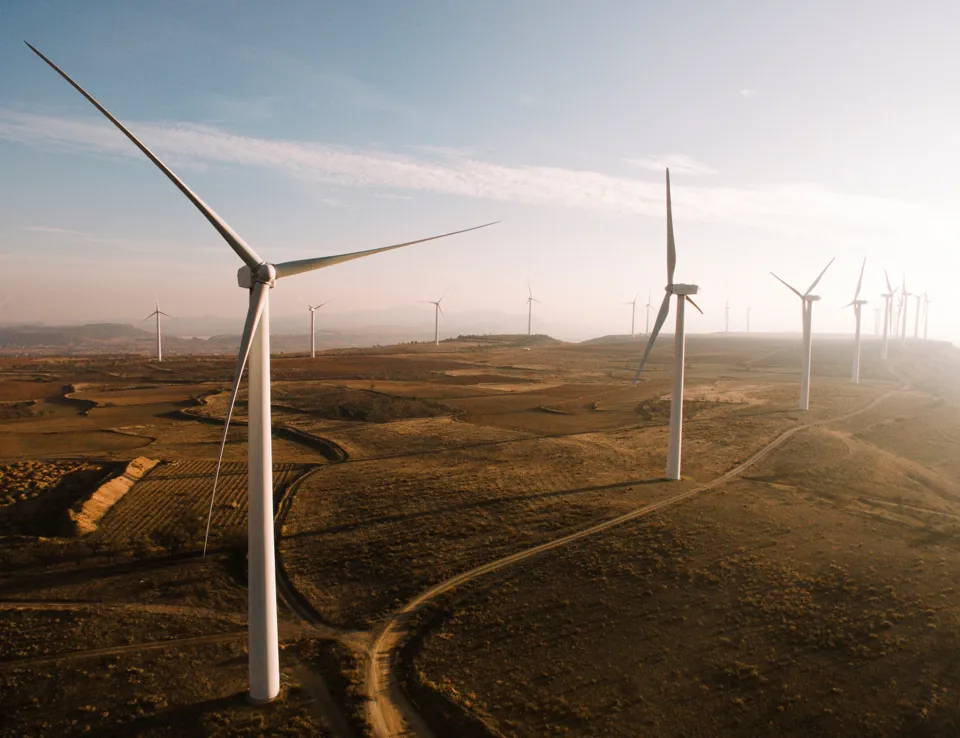
Are ammonia emissions from road vehicles important?
28 Jan 2020
Ammonia as a pollutant
Last year the government published its landmark clean air strategy setting out its approach to reduce the impact that air pollution has on human health and the wider environment. Importantly, the strategy recognises the significant role emissions of ammonia (NH3) play. Emissions of NH3 are important to understand and control because of its central contribution to ecosystem damage but also its role in the formation of fine particulate matter (PM2.5). The strategy emphasises the dominant role played by agriculture in contributing to UK emissions of NH3 – for 2016, it is estimated that agricultural activities contribute to 88% of total UK emissions.
It is clear then, that to significantly reduce UK emissions of NH3, agricultural sources should be tackled. However, there are other sources of NH3 including from road vehicles. Ammonia is not a regulated pollutant as far as vehicle emissions legislation goes and hence there tends to be little data available; especially for real-world emissions.
There is one characteristic of NH3 emissions from vehicles that may be especially important despite national scale emissions being dominated by agricultural sources – road vehicle emissions tend to be co-emitted with NOx – at the same time and in the same location – although at very different rates.
For this reason, it is likely that road vehicle NH3 emissions will have a more effective pathway to the formation of PM2.5 in an urban environment than NH3 released by farming activities that tend to be emitted in rural areas with little available NOx. To test whether emissions of NH3 and NOx tend to be anticorrelated with one another, the km2 total emissions from the NAEI can be plotted, as shown in Figure 1. This plot does indeed show that when emissions of NOx are high, NH3 tend to be low and vice versa. This pattern of emissions distribution is also seen in the US (Fenn et al., 2018).
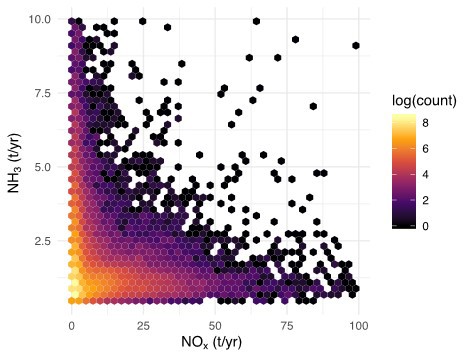
Figure 1. km2 emissions of total NH3 and NOx for 2017 based on data from the NAEI. Areas with high NH3 tend to be associated with low NOx and vice-versa
Road vehicles as a source of ammonia – so where does the emission of NH3 come from?
There are two principal sources: catalyst-equipped petrol vehicles and the growing use of selective catalytic reduction (SCR) on both light and heavy-duty diesel vehicles. Very little UK data are available to illuminate the relative importance of the different transport sources to NH3 under real driving conditions. Ricardo’s work on real-world vehicle emissions, using remote-sensing technology is helping to address this with substantial new data now available.
Since Ricardo began its vehicle emission remote sensing measurements in 2017, we have measured NH3 (and NOx) emissions from nearly 400,000 vehicles. Ricardo’s real-world vehicle emissions database links these measurements with fuel and vehicle types. Figure 2 shows a summary of emissions by some of the important classes of vehicle split by Euro standard. By far the highest emissions of NH3 come from petrol vehicles – especially older petrol vehicles. There is also evidence of elevated emissions from the more recent Euro classes of buses, and larger HGVs, the impact of so called ‘Ammonia slip’ (excess NH3 that is present in exhaust or ‘left over’ from the SCR systems).
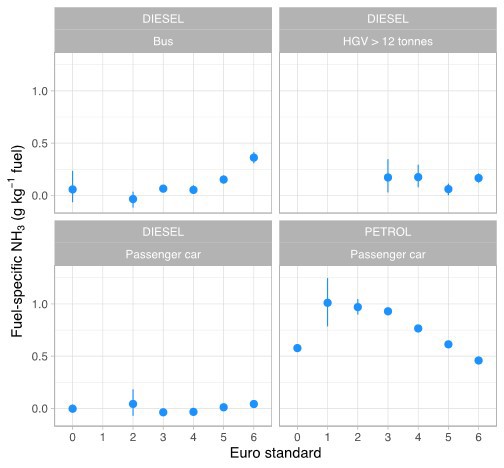
Figure 2. Fuel-specific emissions of NH3 based on the Ricardo real-world vehicle emission database
Taking a closer look at petrol cars, it can be seen that emissions have steadily decreased since vehicles manufactured in the year 2000, as shown in Figure 3. This trend is similar to that seen in the US where the reduction in NH3 has been substantially slower than the reduction in emissions of NOx (Bishop and Stedman, 2015). The magnitude of emissions shown in Figure 3 is similar to that seen for US gasoline vehicles. However, in terms of absolute contributions to NH3, fleet emissions in the US are higher because of the much lower proportions of diesel light duty vehicles.
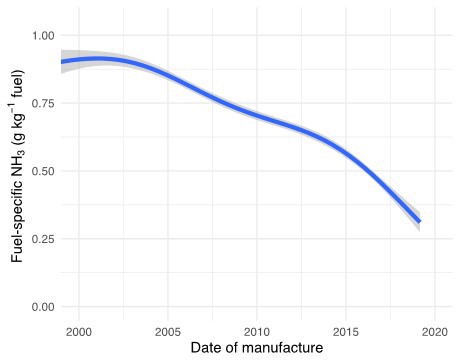
Figure 3. The change in fuel-specific emissions of NH3 from petrol passenger cars as a function of the year of manufacture
It is also useful to consider how the emissions of NH3 vary together with emissions such as CO and NOx. Figure 4 shows the mean values of NH3 versus CO together with the corresponding emission of NOx by vehicle make for petrol cars. There is a tendency that as emissions of CO increase, then so does NH3, consistent with other emissions measurements. The increase in NH3 with CO makes sense because it will be the fuel-rich conditions that lead to the highest emissions of these species. The plot does reveal however that there are vehicle makes that have low emissions of all three pollutants – but equally, there are a few manufacturers that have vehicles with high emissions of all three pollutants.
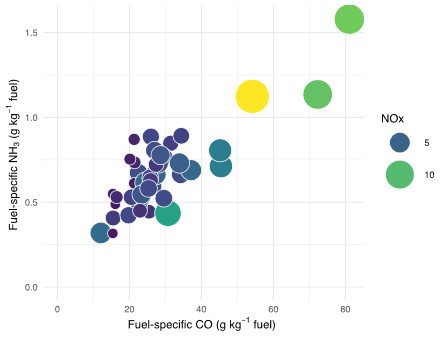
Figure 4. Fuel-specific emissions of CO vs. NH3 for petrol cars shown by individual manufacturer. The size and colour of each point shows the corresponding emission of NOx
Ricardo’s real-world emissions database, which holds over 340,000 valid NH3 emission measurements, can be used to estimate total UK NH3 emissions from petrol and diesel vehicles. Using UK fuel sales data, together with fleet-weighted emissions by main vehicle type and Euro standard, it is estimated that total UK emissions of road transport NH3 are about 8.7 kt/yr, which compares with the published value of 4.5 kt/yr based on the NAEI for a base year of 2017. These estimates require refinement but suggest that NH3 emissions from road vehicles are about double those reported within the NAEI national totals. Interestingly, Sun et al. (2018) determined that CO2-based estimates of NH3 emissions from vehicles were twice that of the emissions reported in the USEPA National Emissions Inventory.
The urban contribution to NH3 is likely even more important because of the effect of cold start emissions. Under these fuel-rich conditions, emissions of NH3 are enhanced from petrol vehicles. Indeed, in a unique set of experiments conducted at Ricardo, we found that NH3 was about three times higher for petrol vehicles started with cold engines than hot engines, which is similar to the NAEI cold/hot emission ratio. In the experiment we measured about 10,000 vehicles arriving at the Harwell campus early in the morning that would be dominated by vehicles with hot engines (this is because, as anyone who has visited the Harwell campus will tell you, it is in the middle of nowhere! Your car has a hot engine when you arrive…). We then measured about the same number leaving in the evening, when almost all vehicles would have been parked all day and would therefore have cold engines.
Wider impacts and uncertain trends
The importance of NH3 in the atmosphere has grown in recent years, in part because emissions of common pollutants such as SO2, CO and NOx have decreased. However, there is also a growing understanding of the important role that NH3 has more generally in the atmosphere. Recent research has highlighted the important role NH3 plays in the formation of new particles in the atmosphere (Lehtipalo et al., 2018). It seems that even very small amounts of NH3 in the atmosphere could have important implications for aerosol formation – a key challenge for the management of both air pollution and climate issues.
As the vehicle fleet continues to evolve, it will be important to understand these emerging issues. Ricardo’s work on real-world emissions of NH3, and other pollutants, is providing new insights as demonstrated above. Many questions remain to be answered, for example, we don’t know how SCR systems will age across the fleet and whether NH3 emissions will increase in the future. The experience in the US suggests that, even with a modern fleet of gasoline vehicles, the emission of NH3 is important for a wide range of air quality impacts. It will also be important to better understand, through air quality modelling, the relative importance of vehicular sources of NH3 compared with agricultural sources across the full gamut of impacts.
References
Bishop, G. A., & Stedman, D. H. (2015). Reactive Nitrogen Species Emission Trends in Three Light-/Medium-Duty United States Fleets. Environmental Science & Technology, 49(18), 11234–11240.
Fenn, M. E., Bytnerowicz, A., Schilling, S. L., Vallano, D. M., Zavaleta, E. S., Weiss, S. B., Morozumi, C., Geiser, L. H. and Hanks, K.: On-road emissions of ammonia: An underappreciated source of atmospheric nitrogen deposition, Sci. Total Environ., 625, 909–919, doi:10.1016/j.scitotenv.2017.12.313, 2018.
Sun, K., Tao, L., Miller, D. J., Pan, D., Golston, L. M., Zondlo, M. A., … Zhu, T. (2017). Vehicle Emissions as an Important Urban Ammonia Source in the United States and China. Environmental Science and Technology, 51(4), 2472–2481. https://doi.org/10.1021/acs.est.6b02805
Lehtipalo, K., Yan, C., Dada, L., Bianchi, F., Xiao, M., Wagner, R., … Worsnop, D. R. (2018). Multicomponent new particle formation from sulfuric acid, ammonia, and biogenic vapors. Science Advances. https://doi.org/10.1126/sciadv.aau5363




 Follow Ricardo plc for regular updates
Follow Ricardo plc for regular updates





